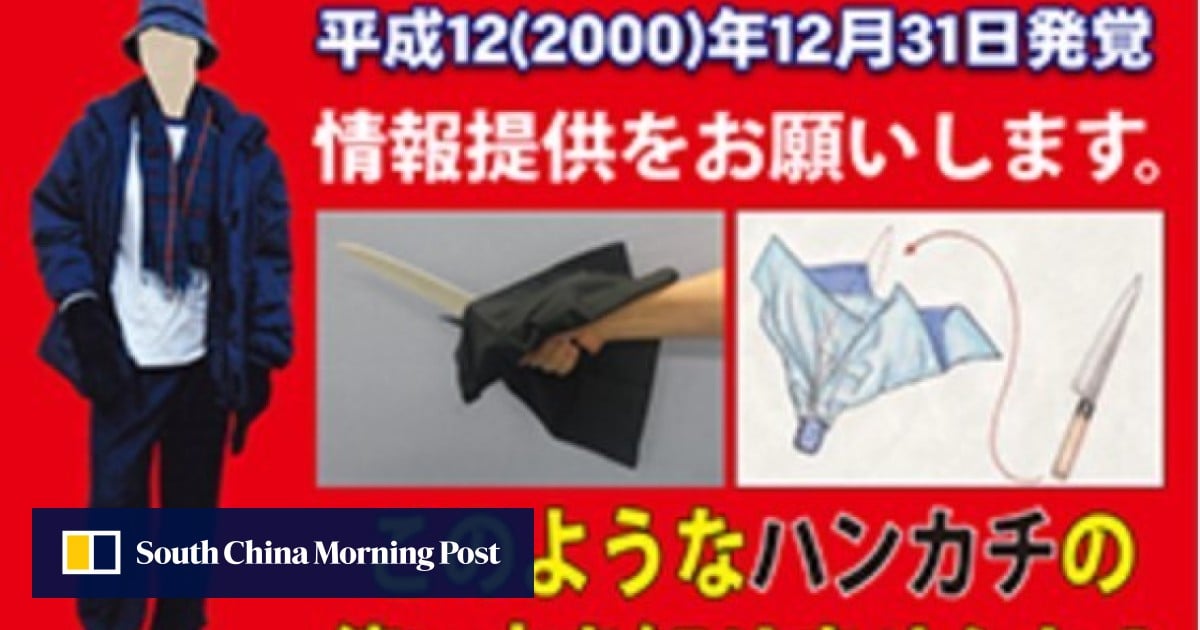I.C.K.
Ice Cream Killer?
rbbm.
The Miyazawa family were slaughtered in their home on New Year’s Eve 2000 in a case that shocked the nation, but despite the killer leaving a host of clues, nobody has ever been arrested.

www.scmp.com
View attachment 475753
Julian Ryall 2020
“It was a combination of things that caught the attention of the public and the media, including
the killings taking place on New Year’s Eve, which is meant to be a time of peace and families being together,” he told the
South China Morning Post.''
''Instead of taking cash or other valuables that were in the house, however, the assailant helped himself to food from the freezer, took a nap on the living room sofa and used the family computer.''
View attachment 475752
The attacker’s shoes may hold a key to his identity. Photo: Handout
Several things (and sorry in advance that this is lengthy):
1. This, from my own translation -- *not* from Google's app, by the way -- of the characters/Kanji in the yellow and black fonts, below the images of the sashimi knife wrapped in a handkerchief (shown):
"Wouldn't you know this method of using a
handkerchief?" -- A harmless question, to be sure, however, in the context of the Japanese language, this question is intended to pull "out of the woodwork" (those seeing this handbill, newspaper article, or website article)
anyone with the slightest familiarity of such a
tsukai-kata ["way to use"].
In a country where
everyone -- male, female, young, old, trendy, and even not-so-trendy -- owns many handkerchiefs, this article most certainly caught the eye of
millions of readers. Japan is a highly literate society (98.5% literacy rate when I lived/worked there throughout the '90s), with people constantly reading books and newspapers
everywhere.
The fact that the author of this article/handbill is asking such a question of Japanese readers clearly demonstrates that the author
knows that this "method of using" (a sashimi knife, in this case) is
highly unusual. Thus, anyone who *might* reply to a request for information is already in a very narrow "pool" of readers.
2. (MOE) Because Japanese society/culture is highly homogeneous, and a part of the cultural mindset is to not "stick out" ("The nail that sticks out will be pounded down." -- Japanese proverb), it is unlikely, unfortunately, that a Japanese person would be willing to "stick out" publicly by revealing what they know about such a "method for using" a handkerchief, much less, to reveal what they know about this case.
3. (This information regarding "barley tea" I read in the previous thread, to which I could not reply.) "Barley tea", or
mugi-cha [barley tea], is a hugely popular drink throughout Japan, and across all age categories. It is primarily enjoyed in the heat and humidity of the Japanese summertime, as many residents there believe that it brings properties of "cooling".
Mugi-cha, like many other Japanese teas, is considered a healthy beverage (high in anti-oxidants, caffeine-free, etc.). It is difficult to ascertain exactly
why the perpetrator of this crime chose
mugi-cha to drink after committing this heinous crime, but one possibility (crazy at it sounds) is that the murderer was feeling excessively warm, and wanted to "cool off". (This desire to bring down the heat of...perhaps anger would also help to explain why the intruder ate
ice cream.) The crime took place in the winter (Dec. 30th) in Japan, and winters in central Japan (specifically the Tokyo area) are not generally extremely cold as the winters are in various parts of the U. S. and Canada.
4. The wife, Yasuko, taught in a cram school (sorry, I don't recall which post I read where that is mentioned, but it appears to be common knowledge). Now then in Japan, "cram schools" (aka:
"jukus") are as common there as gas stations are common in the Western hemisphere. There are multiple "cram school" companies, each touting their wares, and each claiming to offer better rates of success in passing exams. The percentage of Japanese young people attending at least *one* cram school 2-3x during a week (and some students attend
daily after they have finished their regular school day, by the way, without ever even going home first) is high... As for cram school teachers who teach "
juku" classes from their own homes/apartments, there aren't so many, at least nothing as many as those who teach in actual buildings with classrooms...
thousands of classrooms, all across Japan.
5. "Cram school" teachers often teach many groups of students: a cram school in a small town or rural area might have classes as large as 10-15 students, and a school in/near one of the major metropolitan area might have classes with as many as 15-25 students. These students' parents generally sign up their child for at least one class (English or Math are common classes), and each class meets 2 or 3x/week. There are classes for
elementary students (yes!), who go to the "cram school" location right after they finish their afternoon regular school classes. And there are classes for middle school students as well as for high school students, too, often not concluding until 9:30 or 10 p.m. at night. While those who teach in a "cram school" may not know many details about their students' lives,
every" cram school" teacher knows that the students are under tremendous pressure to pass each level of testing, all that they may a.) be able to attend the "best" high schools in a city, and b.) ultimately, to be able to attend the "best" colleges in the country.
6. Students at these "cram schools" often have come to the school directly from their regular schools, with a stop of 30-45 minutes at the local 7-11 store (ubiquitous), replete with all kinds of snacks and beverages to tide over a "starving" young scholar. Many students leave their regular schools in the afternoon, taking a bus or train to the nearest station of their particular "cram school", pausing for a much-needed break with their friends and fellow "crammers".
7. If a student at such a "cram school" resented a.) his/her parents for sending them to a "cram school" (many students
hate having to go, but realize that, on their own, they likely will never pass the entrance exams for their next level of education), b.) his/her
cram school teacher(s), many/most other students or teachers would
never know of that hatred, so well-concealed is the animosity.
8. Finally (again, this is long; sorry), if someone were a dual citizen (just choosing one potential example here; have no "insider information") while in Japan (let's say...someone with both a Korean and a Japanese passport), then...that individual could definitely travel
out of the country (airplanes are just
one mode of transportation): such an individual could take one of the many overnight ferries from the west coast of Japan to South Korea. And (this may have changed, though it seems doubtful) when one boards one of the overnight ferries (taken, by the way, by many Japanese and those who want to travel in South Korea, but not very often by Westerners living in Japan), they
never, ever ask to see someone's passport. Generally a passenger only has to show a basic ID (name and residence location while in Japan). Mentioning this since it is
possible (not saying "likely", because, again, I simply don't know) that someone could high-tail it out of the country of Japan and basically "disappear" -- never to be found/heard from again.
I do find it interesting that one local store owner said (this, I read in a post early on Thread #1) that they had
camera footage (a video, I'm guessing) of the suspect in their store, buying...
a sashimi knife! Now then,
why that store owner did not come forward with that information right at the beginning of the investigation, I have no idea. Nor do I know if it's possible that the TMPD
do have a suspect, but...in order to not "bring shame" upon some well-known local family/politician, that information has never been revealed.
+ + +
And I
love that
@FacelessPodcast is working on this case! Thanks, Nic, for all of your efforts!
MOO/IMOE
Edited to remove the mystery "4." at the bottom of the page.

